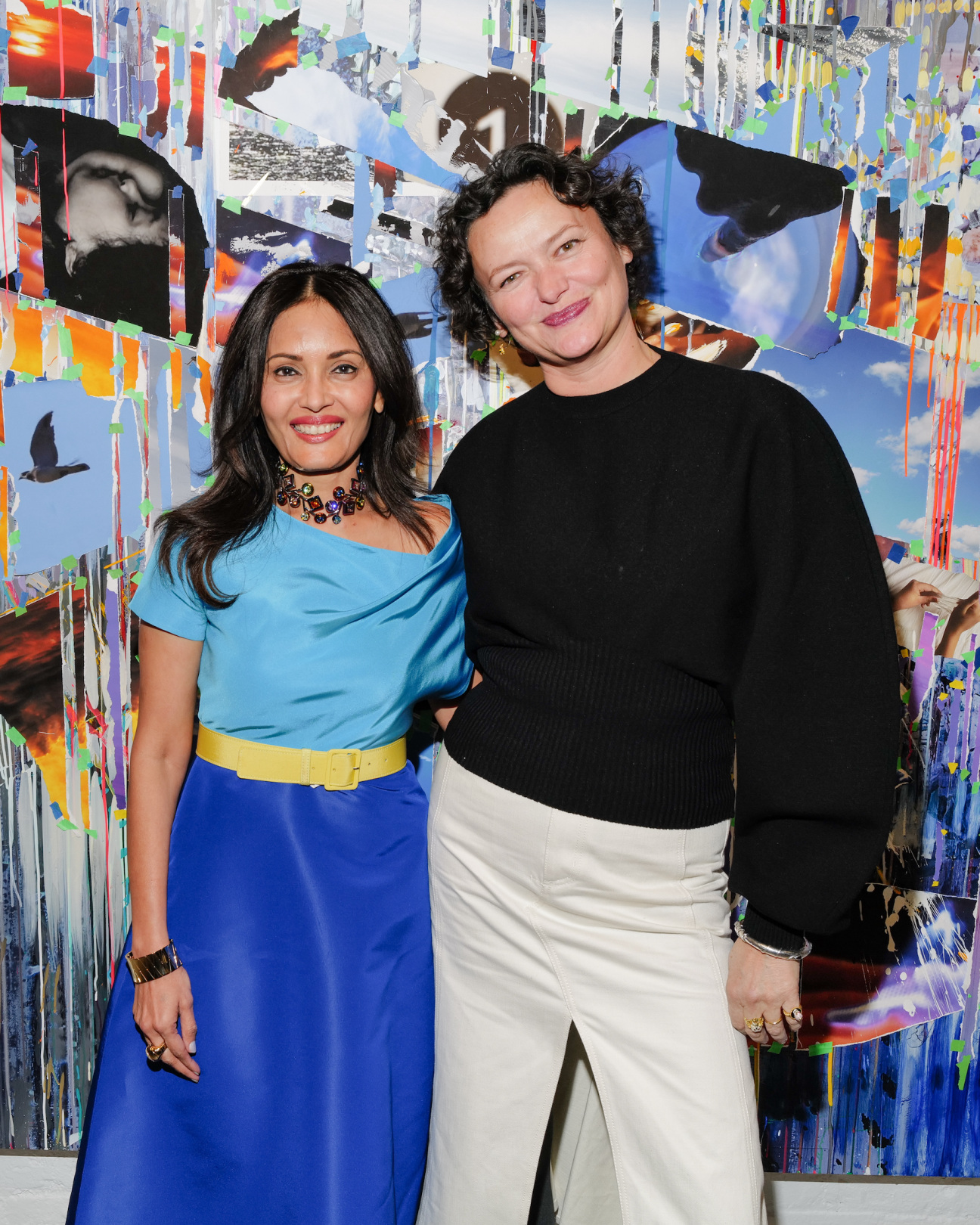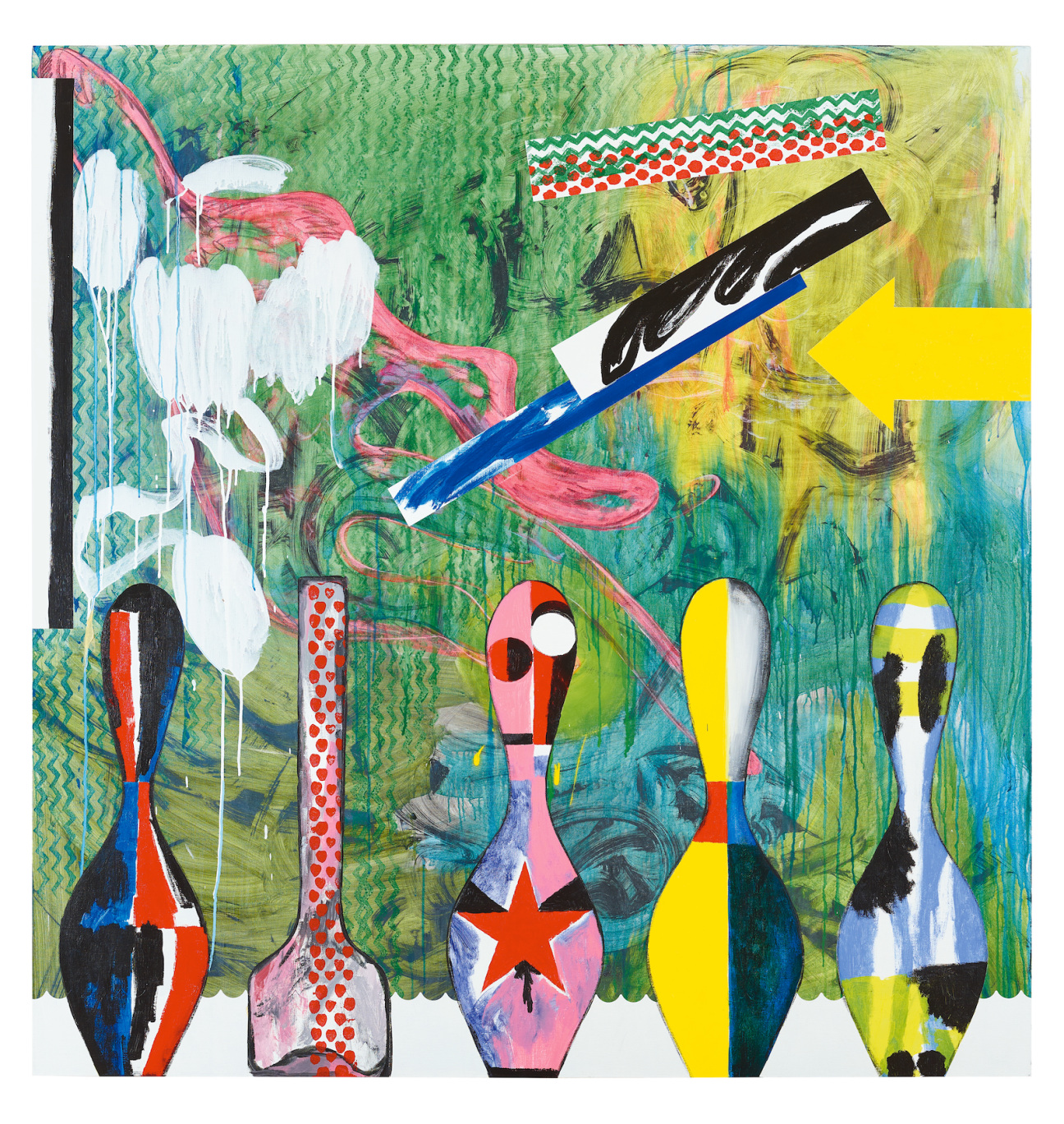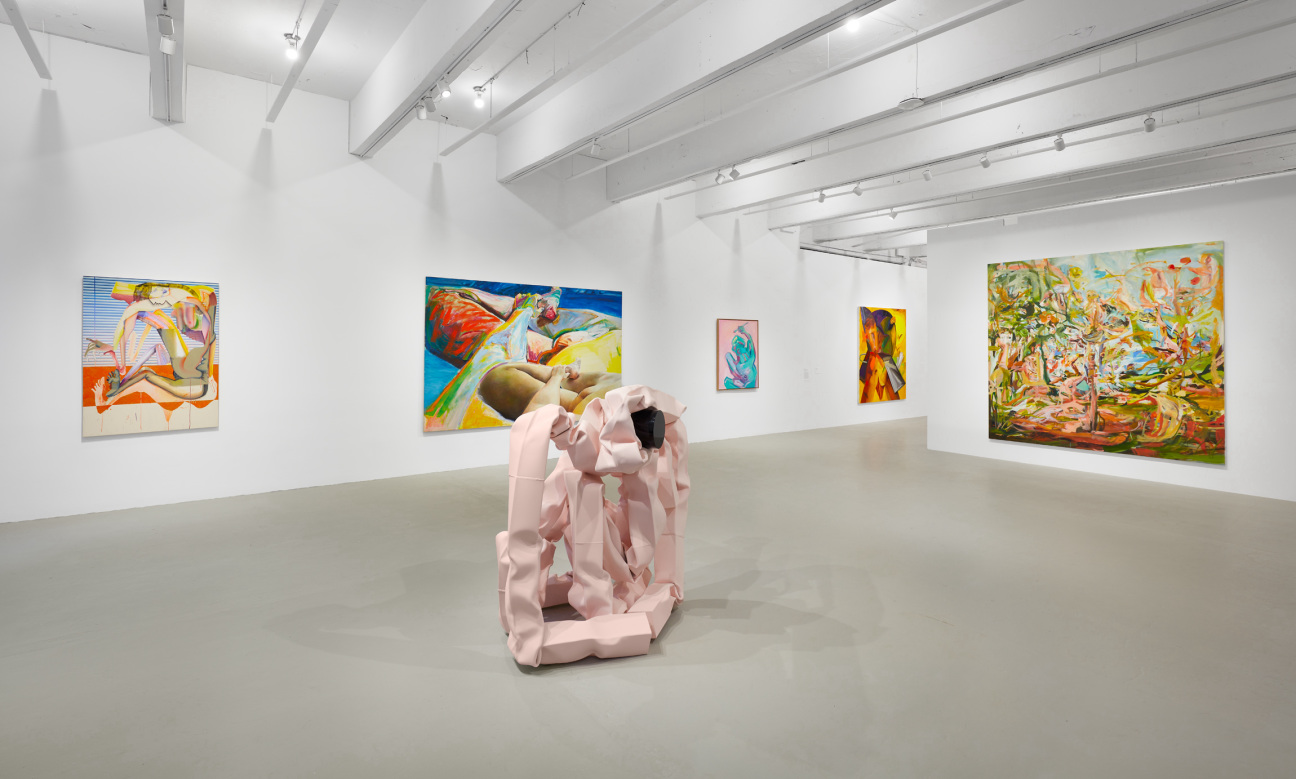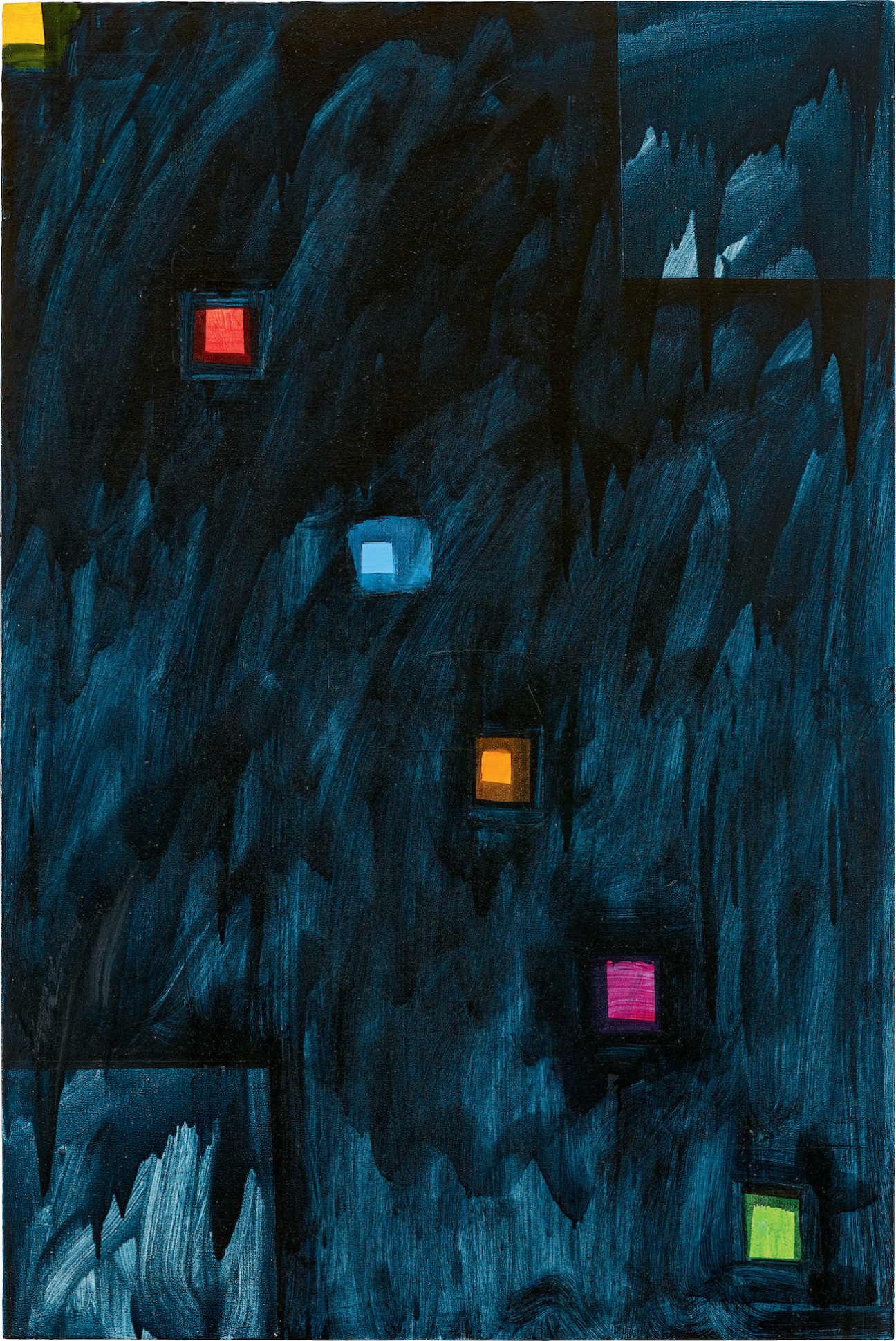
“I think I have a soft spot for octogenarians,” says Komal Shah, laughing. The Bay Area-based computer programmer-turned-tech-executive-turned-art-collector certainly does center the creative contributions of older women in the expansive Shah Garg collection she’s amassed over the past decade with her husband, Gaurav Garg.
The walls of the Chelsea space that hold the collection’s exhibition debut are a visual checklist of female artists who have shaped the way we think about art today. Works by the likes of Lynda Benglis, Barbara Chase-Riboud, Joan Mitchell, Françoise Grossen, Virginia Jaramillo, Jaune Quick-to-See Smith, Joan Semmel, and Sonia Gomes are echoed by those of younger voices like Aria Dean, Anicka Yi, Charline von Heyl, Rose B. Simpson, and Naudline Pierre.
To give form to “Making Their Mark,” which follows the publication of an eponymous book this past May, Shah tapped her friend Cecilia Alemani, who curated a Venice Biennale exhibition last year that featured a majority of female artists. For this show, Alemani wanted “to create a constellation of relationships and rhymes between works that are not necessarily what you would see in a museum or in a more traditional space.”
Those dialogues shine through in an exhibition Shah hopes will be remembered as more than a show featuring women artists, but instead “as a groundbreaking show of great art happening today.” With traveling dates planned for the University of California, Berkeley’s Berkeley Art Museum and Washington University in St. Louis’s Kemper Art Museum next year, the artworks are sure to keep these conversations going across the country. Here, Shah and Alemani talk about their rewarding partnership and the exhibition that came out of it.

CULTURED: You opened the show last Thursday. Can you tell me about the initial reactions from artists or the public?
Komal Shah: I’ve always been worried about this being yet another vanity project and sort of a wealthy person's pastime. And I'm so happy and relieved that people are really actually enjoying the show, and women especially feel thrilled but also justified in being on the walls.
Cecilia Alemani: The show is really exciting and really moving. It resonates with many people, especially women. I look forward to seeing what we'll have in the next few months.

CULTURED: When I was walking around the show, I came away thinking about the conversations that you are starting—between the artists and the works that are on view, but also the conversations that you're starting within the art world and for the viewers. Tell me how the conversation between you two began.
Shah: I wish I could [take] credit for everything that I've done in the last three years, but frankly, I can't. Mark Godfrey suggested doing the book, and as we were starting to do press for it, the number one question was, “How will you make this collection accessible?” That drove this conversation around getting the work out of the house. And I do believe in signals. When I mentioned the idea of the show to Cecilia and if she would be willing to partner with me, the rapidity with which she said yes made me feel like we were on the right track.

Alemani: It's been an amazing journey. I want to acknowledge the work that was done by Katy Siegel and Mark Godfrey creating a book that is not just a book—it's a piece of art history. One of the most rewarding aspects of doing a show out of a collection is that that group of works can be reinterpreted or seen by many different eyes and woven by many different hands. It is also a very personal collection, and one of the most important aspects for me was to respect that voice. I could add my own voice too, but not erase Komal's gaze and Komal’s taste from this selection.
Shah: I thought a high-powered curator like Cecilia would not want to talk to anybody else, but I truly felt like a partner along with the journey. The fact that she wanted to get my input was really wonderful. And truly, I feel like there's so much alignment [between us]. It's been one of the most rewarding partnerships [I’ve] been in, other than [with] my husband.

CULTURED: With the show, you've created a shared vocabulary of sorts, learning to speak each other’s language and seeing how the other approaches things. How did that play into the selection of the works?
Alemani: First of all, I took everything that was hanging in the house, and I brought it here. [Laughs] Kidding aside, it was a process. One of the most important aspects of the collection besides women artists, of course, is a focus on abstraction. To me, that was a point of departure and wanting to also challenge myself, because that's not necessarily my expertise.
So I’m like, “Let's start with the Mary Weatherford—I want the biggest possible painting in the show to be the first thing that people see.” And then the show shifted a lot when we secured a space because the way I see it, as a curator, it comes very much from the space. I also love that there are two floors, and we were able to tell two different stories. Of course, they're connected, but the atmosphere and the temperature are so different.

One of the other very unique aspects of the collection is the presence of many textile and fiber works—works that 20 years ago someone would consider crafts or “low art.” But I actually think that they are some of the most stunning pieces in the collection, and I loved the idea of having those interspersed in the collection next to paintings that a museum curator would consider putting on their walls. So we created this journey where we punctuated the space with different voices coming from different backgrounds.
CULTURED: The flow of the exhibition is split up into different rooms and themes along with the two floor divide. Cecilia, what room did you start with? And when did you know the flow was set?
Alemani: I think the challenging moment was how to integrate works that are not necessarily officially abstractions in the exhibition. I couldn't imagine this show without Joan Semmel or Maria Lassnig. But very often when you do shows, the conceptual challenges are what make the show better because you simply spend more time on them.
So the passage to the second floor was key to the show. But starting on the ground floor, the first room in our mind was called “gestural abstraction,” featuring artists like Joan Mitchell and Mary Weatherford who’ve used their bodies and these very manual brushstrokes. Then the following room was a reflection on how light is also an ingredient that many artists like Mary Corse, Helen Pashgian, and Pat Steir try to materialize on their canvases or in their sculptures.

Then in the last two rooms [on the ground floor], I was very interested [in] the connections between the handmade and the digital, with textiles or collages from Howardena Pindell, the Freedom Bee Quilters, Jennifer Bartlett in dialogue with younger artists like Charline von Heyl, Laura Owens, and Jacqueline Humphries who have been kind of thinking about that kind of gesture from the other side of the screen. On one side you have the loom, and on the other side you have the digital screen.
Upstairs, you enter this room that looks at how art has used abstraction to depict bodies. To me, Maria Lassnig is the key piece in there because she talked about body awareness paintings. She would paint not what she saw in the mirror or in the camera, but what she felt when she was actually painting like her butt squished on the floor, or her elbow—these distorted abstractions that are very personal.
Her piece is next to Joan Semmel’s, who also has been working in imperfect portraits of the female body and her aging body. And then those are in dialogue with someone like Christina Quarles, a super young like artist who in a way has assimilated some of those concerns using very different technology and very different instruments. And then in the following room you have the beautiful Barbara Chase-Riboud and Firelei Báez.

Shah: And in a lot of ways [those pieces] are homages, so they’re conceptual. For Firelei, these are homages to these two Haitian princesses. For Barbara Chase-Riboud, this is an homage to Malcolm X. Cecilia has also very cleverly placed the Elizabeth Murray where it is, because until I bought it, I thought that it was a purely muscular, abstract painting. And I actually received a visit from Roberta Smith, who was going to be lecturing about Elizabeth Murray at Stanford, and she said, “Oh, this is her friend, JoAnne Akalaitis, who was a theater director.”
Then she showed me her orange hair and the clogs she used to wear and the arms had musical notes on them… Suddenly this seemingly mysterious thing had now been completely decoded. To me, this whole discussion on abstraction, representation, figuration is almost about a continuum, as opposed to a polar choice.
CULTURED: How else has your perspective on the works changed since you’ve seen them in this space in Chelsea?
Shah: The works are so much more elevated than they were at home. In a house situation, they are limited, constrained by the size of the walls. Here, they’re free to stand prouder, to be in conversations that they need to be in. And with Cecilia’s direction, they are actually now grouped in a way that amplifies the story and the beauty of the works. My husband, who was here for a day yesterday and who I claimed as being one of the smartest men, said, “You know, I might now have new favorites after seeing the show.”
"Making Their Mark" is on view through January 27, 2024 at 548 West 22nd Street in New York. It will then travel to the Berkeley Art Museum and Pacific Film Archive in September 2024, co-curated by Margot Norton, and then on to the Kemper Art Museum in St. Louis in September 2025, co-curated by Sabine Eckmann.










 in your life?
in your life?

